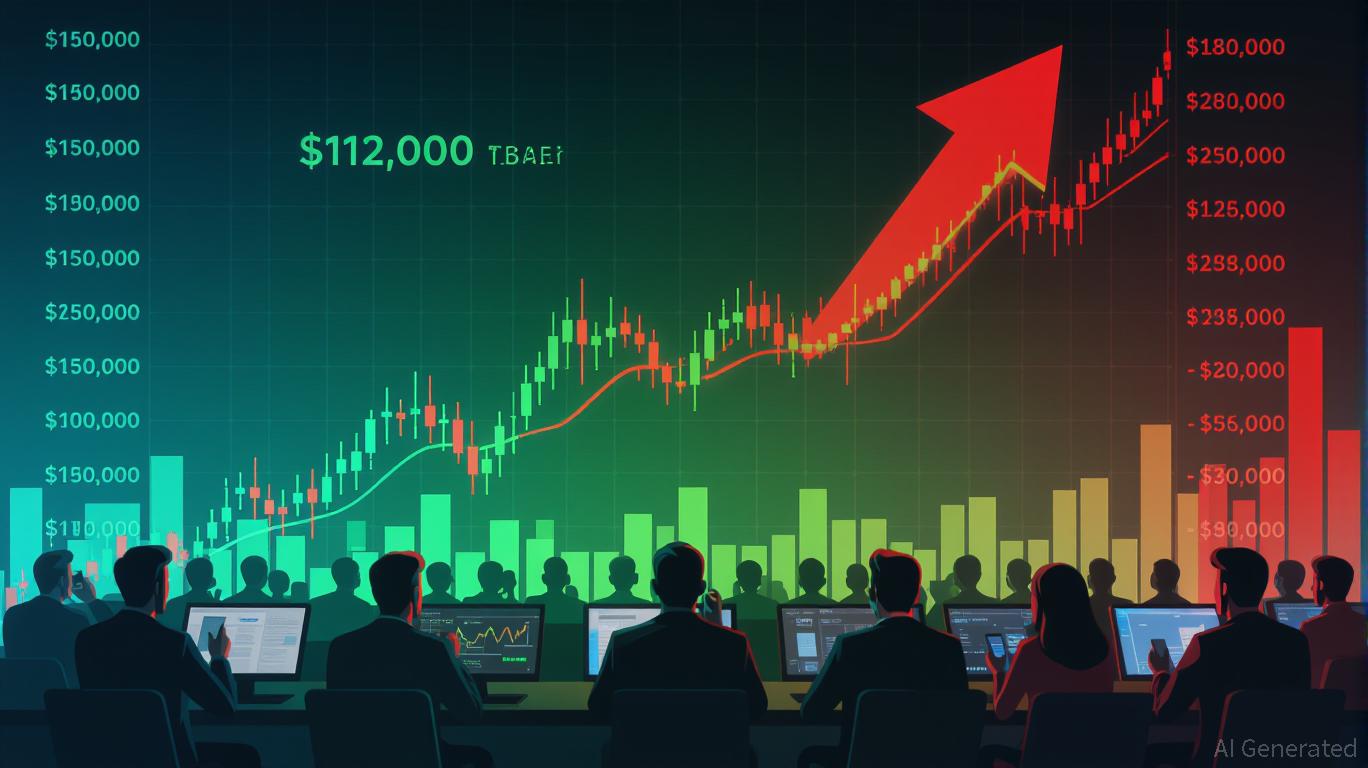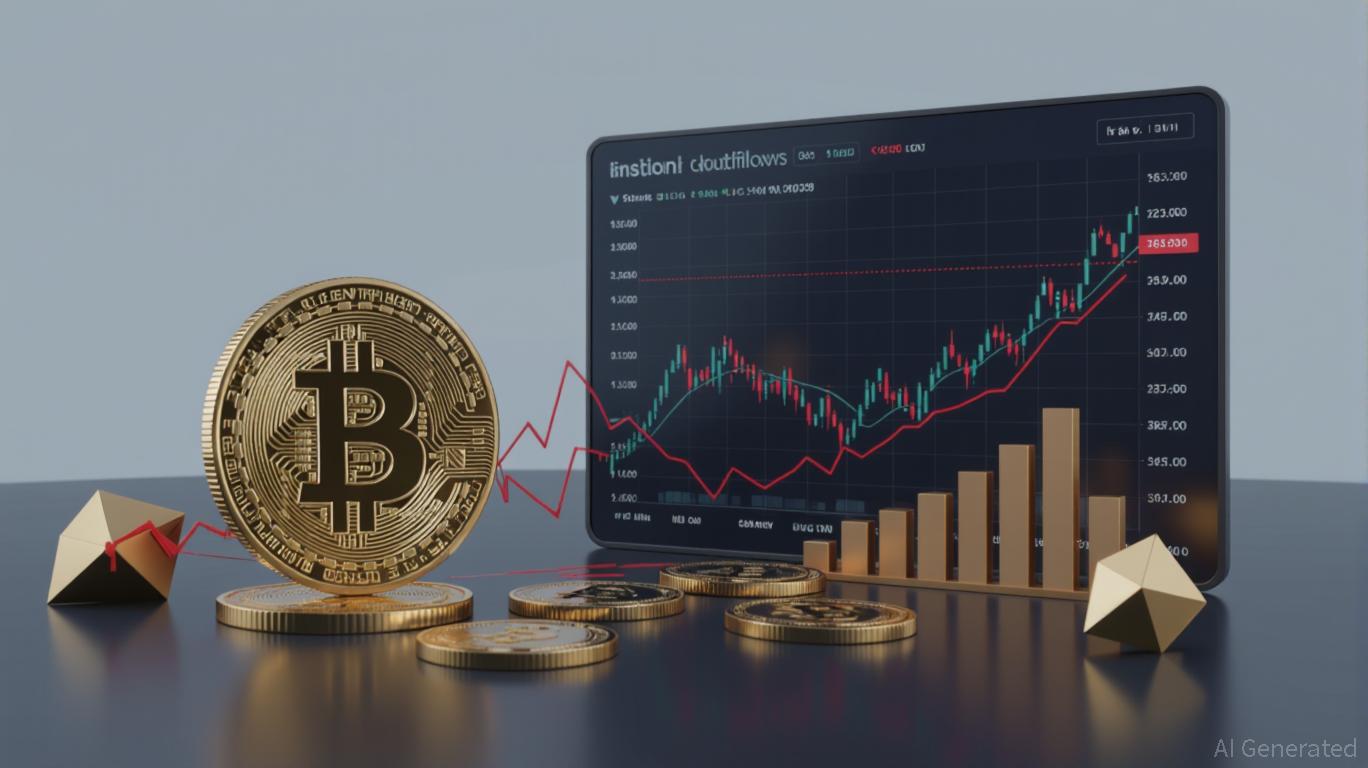Fed Faces Delicate Balancing Act: Weighing Inflation Concerns Against Labor Market Challenges in December Decision
- The Fed faces a December meeting split over rate cuts, with dissenters like Lorie Logan opposing action due to high inflation and Christopher Waller advocating easing to address labor market weakness. - Logan argues current policy balances inflation control with gradual labor market adjustments, warning against premature cuts without clear progress toward 2% inflation. - Waller supports a 25-basis-point cut, citing deteriorating hiring trends, while facing resistance from officials demanding stricter cri
The Federal Reserve is preparing for a potentially divisive meeting in December, as at least three members are anticipated to oppose a proposed interest rate cut. This internal disagreement highlights growing tensions within the central bank, with officials weighing the dangers of ongoing inflation against evidence that the job market is slowing. Dallas Fed President Lorie Logan, who has consistently opposed lowering rates, has reiterated her resistance, while Governor Christopher Waller has become a prominent supporter of additional rate reductions to bolster employment.
Logan, who will have voting power again in 2026, maintained her view that reducing rates in December would be premature. She pointed out that inflation remains elevated and appears to be rising, and although the labor market is cooling, she does not believe further stimulus is warranted at this stage.
In contrast to Logan’s caution, Waller has become an outspoken advocate for a December rate reduction, pointing to worsening conditions in the labor market. Addressing economists in London, Waller argued that "several months of declining" job growth justify another 25-basis-point cut. He
This split within the Fed underscores the challenge of balancing conflicting objectives. While some inflation indicators have eased, core measures remain persistently high. At the same time, labor market reports have been mixed, with recent hiring numbers missing forecasts. This ambiguity has left investors uncertain, closely watching which side will influence the final decision. A rate cut in December could indicate a move toward more supportive monetary policy, but opposition from dissenters may reinforce the Fed’s resolve to keep rates elevated for an extended period.
The decision will have far-reaching effects on both financial markets and the overall economy. Should the Fed choose to lower rates, it might reflect confidence in the labor market’s strength despite inflation concerns. On the other hand, maintaining current rates could validate critics like Logan, who warn that easing too soon could reignite inflation. With the central bank’s reputation at stake, the December meeting will be a crucial test of its ability to steer through a complicated economic environment.
Disclaimer: The content of this article solely reflects the author's opinion and does not represent the platform in any capacity. This article is not intended to serve as a reference for making investment decisions.
You may also like
Fed Weighs Job Growth Against Inflation Concerns in 2026 Interest Rate Decisions
- The Fed plans two 2026 rate cuts amid weak labor markets and stubborn inflation, balancing job support with inflation risks. - Internal FOMC divisions persist, with Vice Chair Jefferson advocating caution and Governor Waller pushing for aggressive cuts, while Trump’s appointee Miran amplifies easing pressure. - Incomplete data from a government shutdown complicates decisions, and market expectations for a December cut dropped to 42.9% amid inflation concerns. - J.P. Morgan urges diversification to hedge

Bitcoin News Update: The Cryptocurrency Market's Ongoing Struggle: Careful Hopefulness Against Persistent Threats
- Crypto market shows stabilization as funding rates on major exchanges return to neutrality after overselling, per Coinglass data. - Bitcoin's 14-day RSI dipped below 30 (oversold level) on Nov 18, suggesting potential short-term rebound despite analysts' caution. - Institutional interest grows with Ark Invest adding $10.2M in Bullish shares, while Hyperliquid (HYPE) shows on-chain resilience. - Macroeconomic risks persist, including U.S. government shutdown impacts and stalled ETF inflows, keeping $95,00

Bitcoin’s Steep Drop: An Ideal Combination of Economic Headwinds and Systemic Threats
- Bitcoin's 30% plunge from its October 2025 peak exposed systemic risks amid Fed's restrictive policy and 3% inflation persistence. - $1.27B in leveraged liquidations and CFTC's spot trading plans amplified volatility, linking crypto risks to traditional finance. - Institutional buyers like MSTR continued aggressive BTC accumulation, raising questions about market distortion during crises. - Investors must monitor Fed policy shifts, regulatory clarity, and leverage management as crypto's systemic vulnerab

Drivers of the Latest BTC Downturn: Institutional Withdrawal or Excessive Market Correction?
- Bitcoin's recent crash reflects $3.2B in institutional outflows since October, driven by liquidity stress and macroeconomic uncertainty. - Major ETFs like BlackRock's IBIT ($463M) and Fidelity's FBTC face massive redemptions as investors recalibrate risk profiles amid tightening financial conditions. - Structural shifts like Singapore's institutional-grade crypto futures signal long-term optimism, but coincide with Fed's restrictive policy (3% inflation) forcing deleveraging. - The correction appears liq
